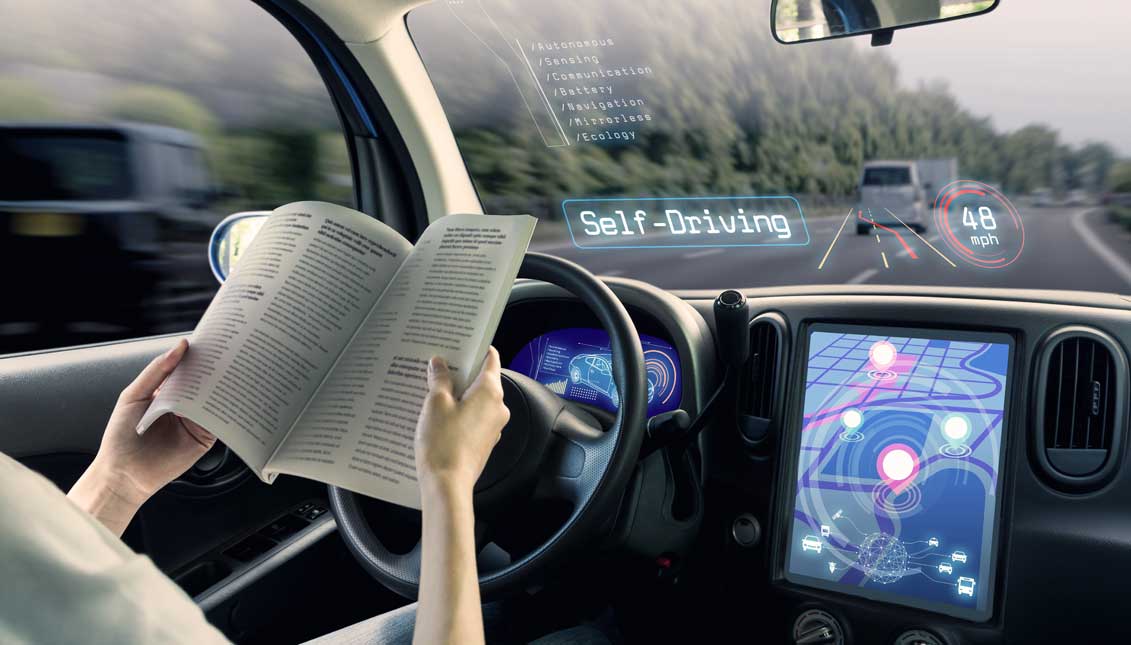
[OP-ED]: Driverless madness
MORE IN THIS SECTION
Unless you’ve been vacationing on Saturn, you know that driverless vehicles are the next Big Thing. Almost every major car company (General Motors, Ford, Toyota, Mercedes) has a program, often in cooperation with tech firms. A few of those, Google being a prominent example, have their own prototypes. In a recent study, Navigant Research -- a consulting firm -- counted 18 projects.
To be sure, the appeal of driverless cars is powerful. In 2015, 35,092 people died in road accidents nationwide, says the Department of Transportation. It attributed more than 90 percent of the crashes “to human choice or error.” If these people had been riding in driverless cars, many of these accidents would not have occurred, the argument goes. The hazards of drinking, texting, speeding and other driving dangers would have been sharply reduced.
The broadest case for driverless vehicles is that they would allow us to recapture the many hours we spend sitting in traffic, fuming and wasting time. Instead, we’d program our vehicle with the destination. It would drive, while we snoozed, streamed TV shows and movies, attended to work, read a book or gazed at the scenery. Billions of hours would be recovered.
There are some obvious obstacles to this seductive future. Under favorable circumstances, it would take years to materialize. There are roughly 250 million cars and other light-duty vehicles (pickups, SUVs) on the road. In a good year, the industry sells 17 million vehicles. Even if, beginning in 2018, all these were driverless, it would be 15 years before today’s fleet is replaced.
And these assumptions are, of course, unrealistic. “Some people actually like driving,” says economist Benjamin Leard of the think tank Resources for the Future. Most won’t be customers for driverless vehicles. Neither will many Americans who don’t trust the reliability of self-driving vehicles. That’s about 60 percent of the public, reports an opinion survey conducted by Michael Sivak and Brandon Schoettle of Sustainable World Transportation, a research group at the University of Michigan.
Still other potential customers may be deterred by the high costs of all the needed sensors, cameras, computer chips and software. With present technology, this could add $10,000 to the cost of new vehicles, though that is expected to decline with time, says Leard.
Even those who expect to benefit from driverless vehicles may be disappointed, notes Sivak. True, typical drivers spend an hour a day on the road, which seems an ample period for other uses. But there’s a catch. “The fact [is] that current trips in light-duty vehicles average only about 19 minutes -- a rather short duration for sustained productive activity or invigorating sleep,” he says.
So the benefits of driverless vehicles may be modest, at least at the start, while the costs could be considerable. A clear danger would be digital hacking. In a recent special section on cybersecurity, a writer for The Wall Street Journal put it this way:
“As vehicles fill up with more digital controls and internet-connected devices, they’re becoming more vulnerable to cybercriminals, who can hack into those systems just like they can attack computers. Almost any digitally connected device in a car could become an entry point to the vehicle’s central communications network, opening a door for hackers to potentially take control by, for instance, disabling the engine or brakes.”
The Journal story focuses exclusively on cybercrime: for example, locking a car remotely and refusing to open it until a ransom is paid. If millions of vehicles were shut down simultaneously, the ransom paid by car companies could be staggering.
But the real threat is not ordinary crime. It’s cyberwarfare: attacks by terrorist groups or hostile nations, intent on sowing panic and social disorder. Imagine the chaos if some adversary immobilized 10 percent of the light vehicle fleet, leaving about 25 million cars and trucks sprawled randomly along roads from Maine to California.
Do our enemies have this capacity, or could they develop it? We don’t know. What we do know is that we have consistently underestimated the dangers posed by the misuse of cyber technologies -- the latest examples being Russian interference with the 2016 election and the massive hack at the credit bureau Equifax.
There is a disturbing relationship here. The more we depend on digital technologies for everyday business and pleasure, the more we become vulnerable to potentially catastrophic disruptions. Cars and trucks are but the latest examples.
Driverless technologies are not to be coddled or promoted. Their development should be slow and sober. If the evidence warrants, it should be stopped altogether. We are weaponizing our cars and trucks for use against us. It’s madness.







LEAVE A COMMENT:
Join the discussion! Leave a comment.